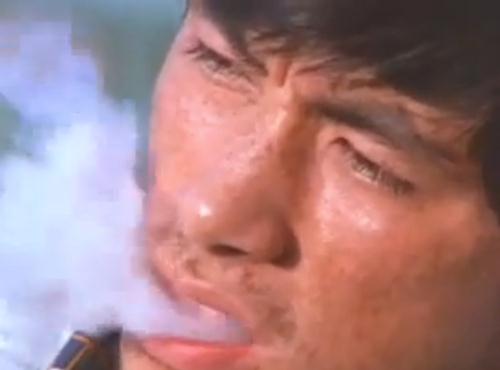‘Medicinal Plants and the Legacy of Richard E. Schultes’ and ‘Smoke Signals: A Social History of Marijuana’ are this year’s recipients of the American Botanical Council’s (ABC) James A. Duke Excellence in Botanical Literature Award.
Full Article:
http://www.nutraingredients-usa.com/Industry/ABC-announces-James-A.-Duke-Excellence-in-Botanical-Literature-Award-recipients
Category: Cannabis News Corner
Even Louisiana is seeing that drug offenders need a break
By James Gill, NOLA.com | The Times-Picayune

Gov. Bobby Jindal, along with lawmakers and justice system stakeholders, held a press conference in Baton Rouge Feb. 15 to announce a series of legislative proposals aimed at reducing recidivism among drug offenders and improving services and programs for juveniles. (Photo by Lauren McGaughy/NOLA.com|The Times-Picayune))
It might take Louisiana 100 years to follow the lead of Colorado and Washington, which legalized marijuana possession a few months ago, but even here a liberal whiff is in the air. It is a very faint one, because, when we elected Bobby Jindal governor, the idea was not to turn Baton Rouge over to a bunch of hippies. Even though he claimed to have witnessed an exorcism, mind-altering substances did not appear to be his bag. He has always been the model of a law-and-order Republican.
But the times are a-changing, and it is no longer regarded as subversive to suggest that locking up penny-ante offenders and throwing away the key might not be the most enlightened policy. Now, here comes Jindal to propose somewhat less prison and more probation and treatment. It is about time. Louisiana locks up a higher percentage of its citizens for drug offenses, for longer terms, than anywhere else. The average sentence for possession here, on first and second offense, is four years.
It costs a lot to destroy so many lives — we imprisoned 1,350 first- and second-timers in 2010 and 2011 — and financial considerations will help drive any reforms.
Jindal is still not reaching for the kid gloves. He plans to focus on “rehabilitating those who can be rehabilitated – non-violent, non-habitual offenders.” He might as well have said “those who don’t need to be rehabilitated,” because such folks would not be caught up in a rational criminal justice system. Let them enjoy an occasional toke in peace while we concentrate on criminals who pose a threat.
Jindal proposes more drug courts, where offenders are given probation and may qualify to have their records expunged. The recidivism rate in such courts, of which we currently have 48, is 3.2 percent, whereas drug offenders sent to prison are 10 times more likely to be convicted again. Statistics don’t get less surprising than that.
Full Article:
http://www.nola.com/opinions/index.ssf/2013/02/even_louisiana_is_seeing_that.html#incart_river
OSU to offer course on hemp
By Don Iler
Oregon State University will be offering the first course in industrial hemp beginning spring term. The course will be offered online and is the first of its kind in the world.
The three-credit course, WSE 266, is being offered by the College of Forestry’s department of wood science and engineering and will be coordinated by Anndrea Hermann, an instructor in the college.
“It’s an up and coming crop in the United States and we are going to need professionals coming out of academia who are experts in multiple areas,” Hermann said.
Cultivation of hemp is currently illegal in the United States, although importation of it is legal. Hemp is a non-psychoactive relative of cannabis sativa indica or marijuana, and can be used for a variety of purposes. Hemp was once widely grown in the United States but has been banned by the federal government for more than 50 years.
Hermann said hemp can be used in a variety of different applications, from making paper and textiles to food products and biofuels, and the industry stands to grow in the near future. Sales of hemp products exceeded $452 million last year according to the Hemp Industries Association.
Hermann said a variety of students would benefit from the class, anyone from food science students to those interested in fashion and textiles.
Full Article:
http://www.dailybarometer.com/osu-to-offer-course-on-hemp-1.2994547#.USp6qqL-fFJ
(Yonhap Feature) Korea’s forgotten high times
By Jason Strother

Screen shot from an anti-marijuana public service announcement circa mid-1970s
Like any young art student, Kim Woo-jin sought inspiration wherever he could find it. He studied ceramics at university during the mid-1970s, a time of economic and cultural upheaval in South Korea. Kim says he was a freshman when upperclassmen showed him how to expand his creative horizons.
“A lot of art students were smoking marijuana at the time It made me more focused and I felt that I could do anything,” says Kim, who asked that his real name not be used. “We did not feel any shame or guilt about smoking marijuana, back then it was not considered a social problem” Smoking marijuana was not uncommon for Koreans like Kim who came of age in the 1960s and 70s. But for the youth of today, it is an almost unthinkable taboo. For the few who have tried it, experimentation occurs overseas and is not a story they share with friends upon returning home. Celebrities who admit to smoking are publically shamed and face vicious attacks by Jaded fans on Internet message boards Korea, in fact, has a long history with cannabis, and one that seems to be all but forgotten. Marijuana, known in Korean as “daema,” was once found growing wild throughout the countryside. It lined the sides of dirt roads as a dust guard for homes. It was one of Korea’s largest cash crops, cultivated to make hemp for numerous products including the “hanbok,” Korea’s traditional costume, as well as funeral shrouds. The plant’s seeds were and still are considered a remedy for constipation by practitioners of Korean traditional medicine, and steamed seeds could be found in some herbal markets.
Full Article:
http://english.yonhapnews.co.kr/n_feature/2013/02/14/16/4901000000AEN20130214003200315F.HTML
Ole Miss cooks up marijuana pain patch
By WMCTV.com Staff – email
Ole Miss is home to the only legally grown marijuana crop in the nation and a new development there is creating quite a buzz.
Faculty and student researchers say they created a new pain reliever in the form of a patch.
Dr. Mahmoud Elsohly is a faculty member at the School of Pharmacy at Ole Miss. He and his team have been working inside their marijuana research lab for nearly seven years to find alternative uses for THC, which is the main psychoactive ingredient in marijuana.
Full Article:
http://www.14news.com/story/21217891/a-look-ahead-ole-miss-cooks-up-marijuana-pain-patch
A new Hemphasis
By Helga Ahmad

Commercial hemp plants are grown for fiber production in Canada
International reports have warned Pakistan for many years about the looming water crisis the country will face if it doesn’t take essential measures to prevent it. A reduced inflow of irrigation water will have a substantial effect on the food chain. But a growing problem that has been ignored is that Pakistan’s canal irrigated agricultural soil is dying because of the massive use of chemical fertilizers and pesticides, losing its chemical balance and therefore its carrying capacity.
Seventeen years ago, a group of Dutch scientists led by a Pakistani colleague undertook a study in the rural areas of Sialkot that supply fresh vegetables to Lahore and Islamabad during winter. They periodically tested canal and tube-well irrigated soil, and the growing vegetables, for a full growth cycle. The final samples were taken from vehicles ready to take the vegetables to the market. Volumes of scientific data revealed that they were not fit for human consumption.
At the Shaukat Khanum Cancer Hospital in Lahore, pre-teen girls from rural areas that grow tobacco are being treated for cancer. They are among the many young girls who string up tobacco leaves during the harvesting season for the drying chambers. The tobacco crop requires up to 16 pesticide sprays. An effort to establish an extensive program to raise natural predators for the pest failed. The problem is growing rapidly, and is now even affecting newborns.
Commercial interests played a major role in propagating the “Reefer Madness” hysteria in the US in the mid-1930s
In the cotton growing belt, young cotton pickers are exposed to the dried pesticide residue in the plants. Cottonwood is also burnt as fuel in the nearby villages, and women inhale the fumes while cooking. Some reports say other crops grown in the same soil also acquire the harmful effects of pesticides. This puts a large number of people at the risk of cancer.
A Pakistani dairy company was not allowed to export milk products to Malaysia because the pesticide residue was far higher than the WHO standards. Cottonseed cake, a major animal feed, is also a carrier, besides the fodder that acquires it from the soil. Decades of use of heavy farm machinery rolling over agricultural lands has hardened the top soil, destroying its natural fauna, which used to feed on the dry vegetative matter and was known to build up healthy humus content.
Before things get worse, perhaps we need to look westward where efforts are underway to find alternative solutions to the increasing natural hazards, finally acknowledged to be mainly man-made. The focus today in the West as well as China is on the benefits of hemp (cannabis sativa) – a plant that has been prohibited in our country for decades.
Hemp fiber length is up to 15 feet. Cotton fiber is less than one inch long
It is now an established fact that commercial interests played a major role in propagating the “Reefer Madness” hysteria in the mid-1930s, although industrial hemp was already a major crop in the US. Hemp was then considered a serious competitor to newly developing technologies in the synthetic fiber, textile, timber and paper oil, composite wood, and pharmaceutical industries. Aggressive lobbying for marijuana prohibition began, and the plant is still banned in the US. The industrial hemp that was the basic raw-material for Henry Ford’s car industry was wiped off the map.
Full Article:
http://www.thefridaytimes.com/beta3/tft/article.php?issue=20130215&page=9
Kentucky Senate approves bill to license hemp farmers
By Janet Patton — jpatton1@herald-leader.com

The proposal advances to the House, where Speaker Greg Stumbo has suggested the issue needs more study to see if potential economic benefits outweigh the concerns of law enforcement officials.
The only Senator who did not vote on the bill was Senate President Robert Stivers, R-Manchester. Afterward, Stivers declined to tell reporters why he did not vote, saying he was in a hurry to get home for Valentine’s Day.
Bloomberg: No More Jail Stays for Minor NYC Marijuana Busts
by Phillip Smith

New York Mayor Michael Bloomberg (wikimedia.org)
In his final state of the city address Thursday, New York City Mayor Michael Bloomberg announced that people caught with small amounts of marijuana in the city will no longer be subjected to overnight stays in the city’s jails, but will merely be taken to the precinct for a desk appearance and then released.
Full Article:
http://stopthedrugwar.org/chronicle/2013/feb/14/bloomberg_no_more_jail_stays_min
Unexpected champion of medical marijuana emerging in new fight to keep the drug legal
by Christine LaCroix
PHOENIX — Melvin McDonald is a Mormon, a father, a former judge and US Attorney, and surprisingly, an outspoken supporter of medical marijuana.
Strong smell of marijuana reported inside Colorado Capitol Wednesday morning
by Anica Padilla
A strong smell of marijuana was reported inside the Colorado Capitol Wednesday morning, 7NEWS Reporter Russell Haythorn confirmed.
The entire Senate chamber smelled like marijuana, said Doug Schepman, communications director for the Senate Democrats.
Full Article:
http://www.thedenverchannel.com/news/local-news/strong-smell-of-marijuana-reported-inside-colorado-capitol-wednesday-morning